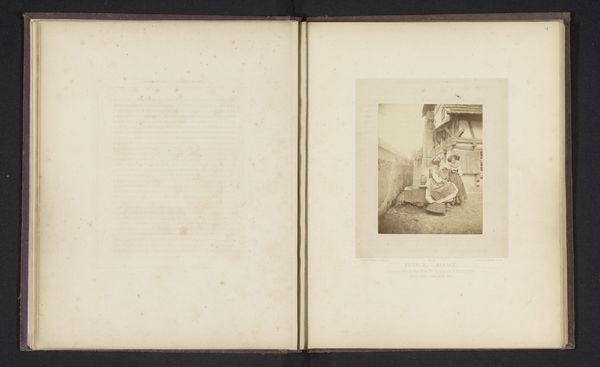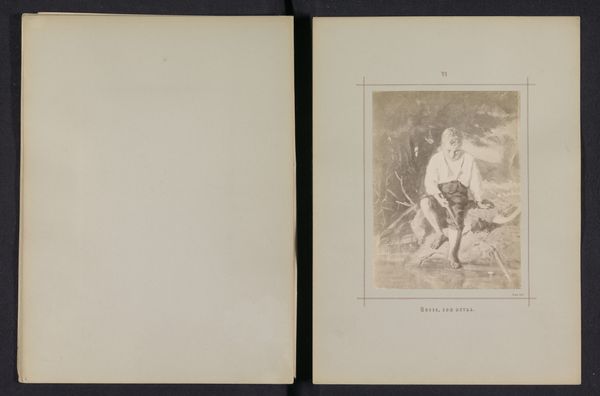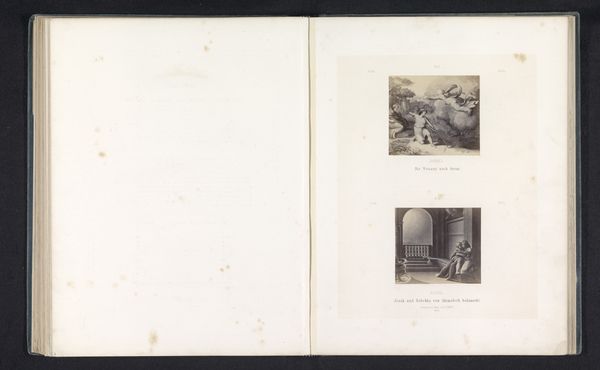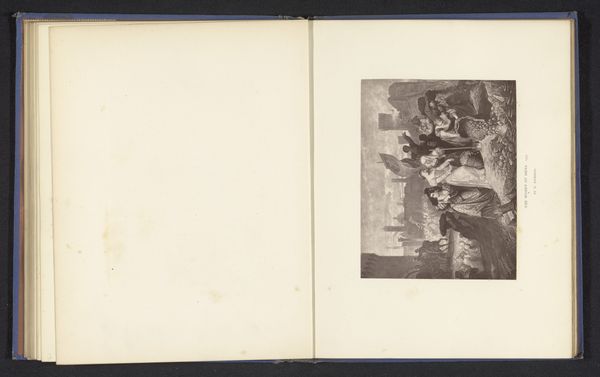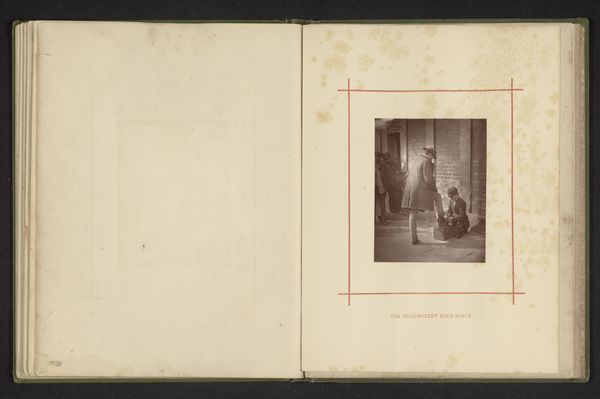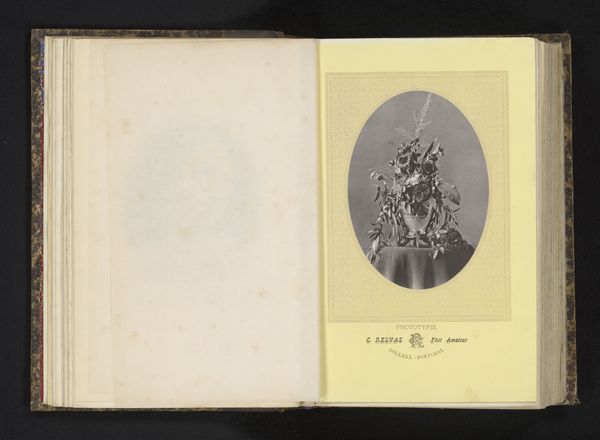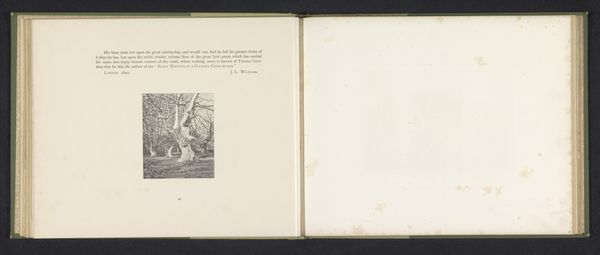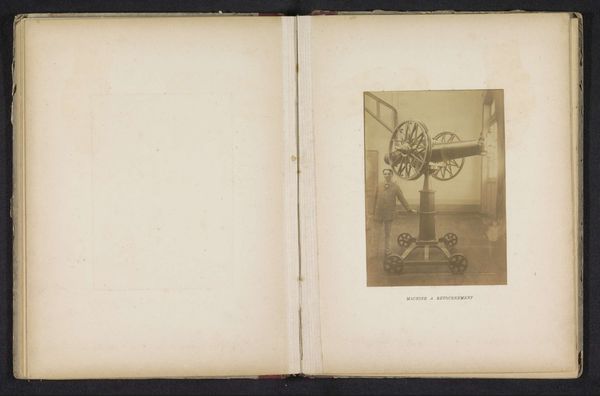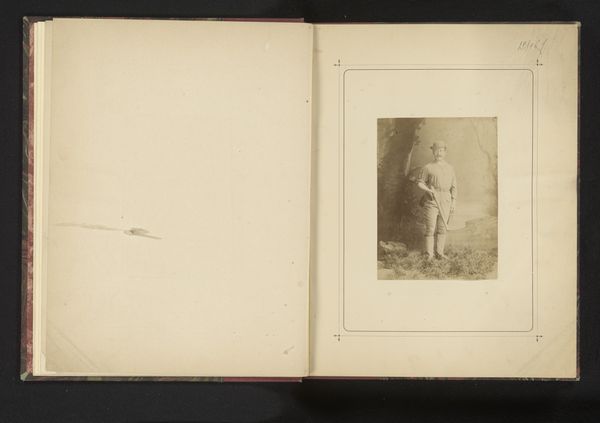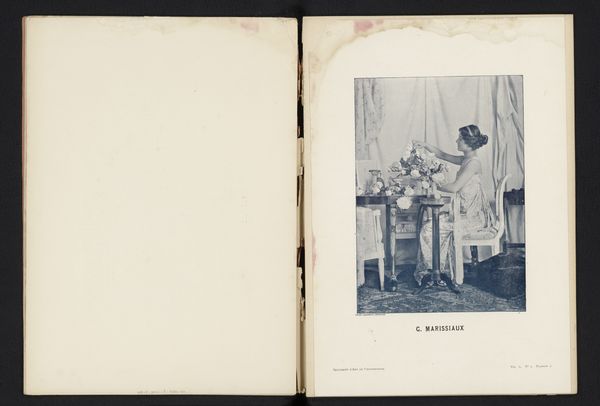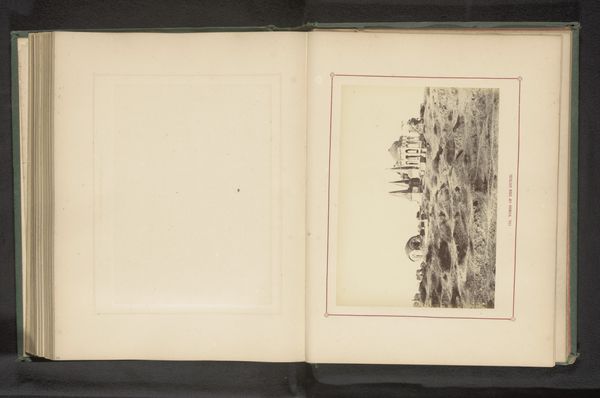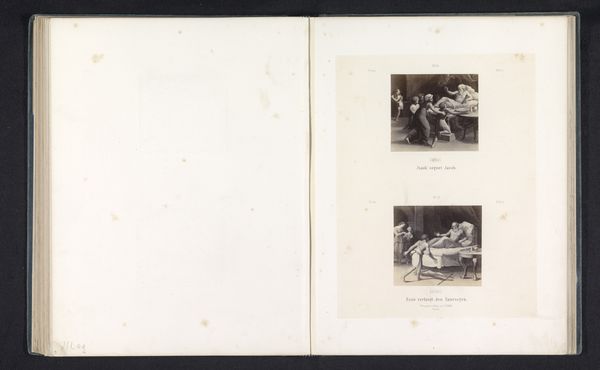
Twee jagers met jachtgeweren en een man met een snaarinstrument before 1886
0:00
0:00
photography, albumen-print
#
portrait
#
african-art
#
aged paper
#
homemade paper
#
paper non-digital material
#
paperlike
#
sketch book
#
paper texture
#
photography
#
personal sketchbook
#
folded paper
#
genre-painting
#
paper medium
#
design on paper
#
albumen-print
Dimensions: height 202 mm, width 280 mm
Copyright: Rijks Museum: Open Domain
Editor: So, we're looking at "Two Hunters with Guns and a Man with a String Instrument," an albumen print from before 1886 by José Augusto da Cunha Moraes. The images feel like posed studio shots pasted into an album or book. They evoke a sense of colonial documentation to me. How do you interpret this work, especially considering the way it’s presented? Curator: It's precisely that presentation which interests me. These aren't simply photographs, but images deliberately framed and placed within a bound volume. This act of curation immediately shifts the meaning. We're not just seeing portraits; we're seeing them within a colonial gaze, carefully categorized and presented for a presumably European audience. Who are these individuals and what narratives are being imposed upon them? Editor: I see your point. It's like an early form of ethnographic cataloging. The fact they are labelled "Cazadores" and "The Orator of Benguela" makes me think about how individuals were being reduced to types by European colonial powers at the time. Curator: Exactly! And consider the "truth" of photography at that moment. Photography lent an air of scientific objectivity. The colonial power structure used photography to solidify beliefs in their perceived supremacy. Were the subjects consulted or did they have any say in how they were portrayed? How might this presentation affect how viewers interpret and engage with the people being represented? Editor: I hadn't thought about the implicit power dynamics that went into displaying these portraits. Curator: The act of placing these images within a book elevates their status as something to be studied and preserved and presented in a way to reinforce Western imperial world views. How do we reckon with that legacy? That tension informs everything we see here. Editor: Understanding that shifts my entire perspective. Now I'm thinking more about who gets to tell the story. Curator: Precisely! It is a vital question when looking at images created during periods of colonial expansion. We can ask ourselves how it perpetuates or challenges particular narratives about people.
Comments
No comments
Be the first to comment and join the conversation on the ultimate creative platform.
